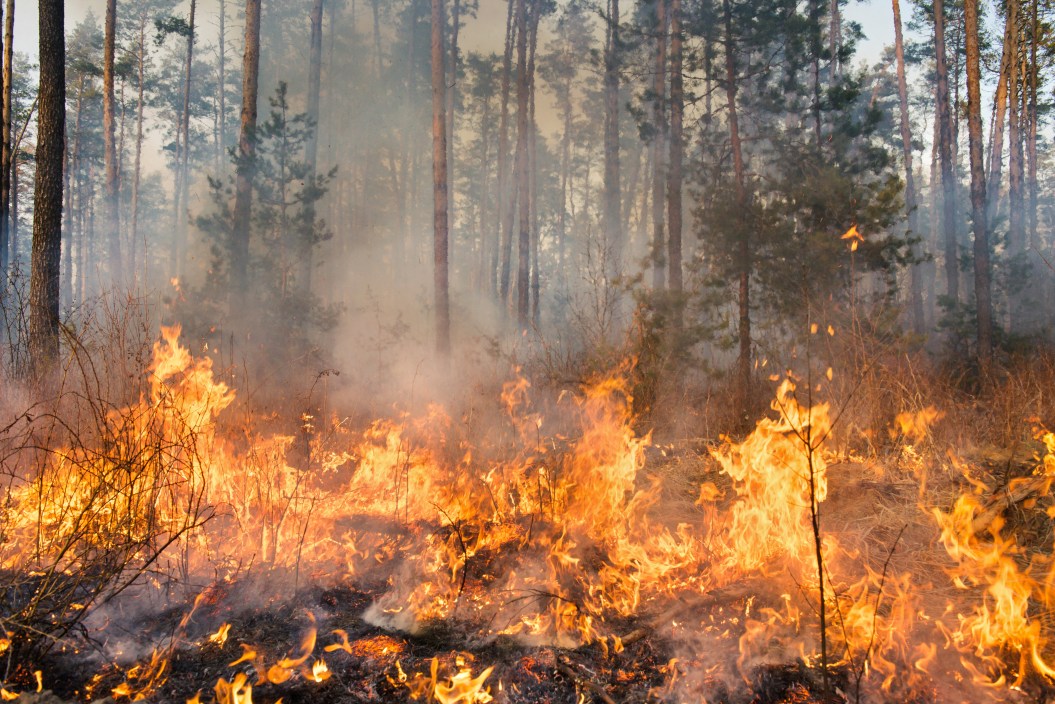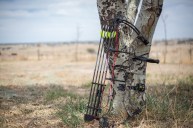After a wet spring and summer, you might assume you're safe from the threat of wildfires in the fall. But, unfortunately, the opposite is true: While rain is great for mitigating wildfire risk at that time, it also causes vegetation to grow abundantly. When the rain stops, all that plant life dries out and, suddenly, you have a whole lot of fuel around outside.
As a hunter, you may not give the hazards of wildfires much thought. But the reality may be quite the opposite. Here's what you need to know to hunt safely while mitigating wildfire risks.
Hunting and the Risks of Wildfires
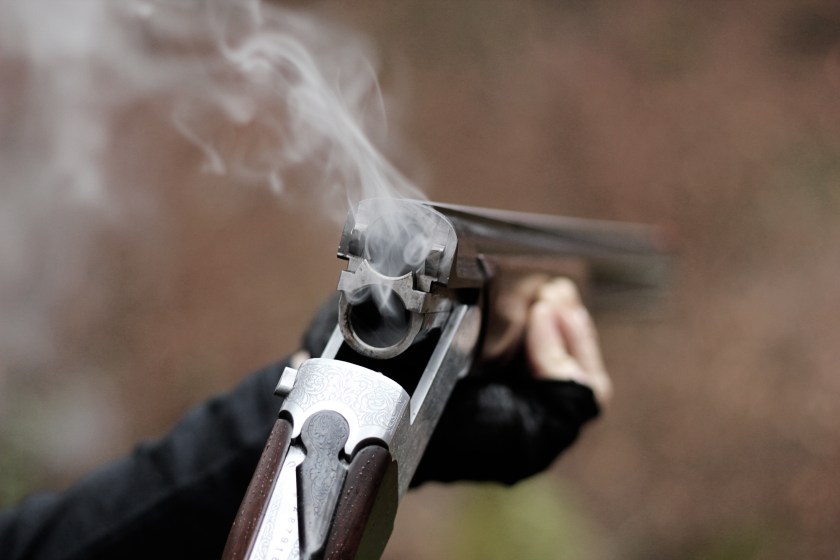
Getty Images, IndiaUniform
Fires can happen pretty much anywhere, from the grasslands of the Midwest to the rainy forests of the Pacific Northwest. Hunting safely and responsibly includes being aware of these risks outside of your control, as well as how your own actions can contribute. After all, according to the National Park Service, roughly 85 percent of wildfires are caused by humans.
As someone who grew up in the woods of Colorado in a family of hunters and is now pursuing a degree in wildland fire management, I can tell you: Hunting is especially high-risk. Not only do we use a campfire to stay warm on chilly nights in the backcountry, but also a wildfire can be ignited by a stray bullet or sparked broadhead during target practice.
What's more, hunters are often in the field, out of cell service. That means if your exit route is blocked by a new and quickly growing inferno, you're in real trouble. Stay safe! Keep these tips in mind while hunting in the fall—and playing outdoors year-round.
1. Know the Local Fire Risk Where You're Hunting
Before you head into the woods, no matter how many times you may have hunted there before, make sure you check up on the big three:
- The listed fire danger for the area.
- The predicted weather.
- Any local fire restrictions (if you plan to set up camp).
This information can be found in a variety of places, from county or forest service websites to monitoring pillars such as InciWEB and newer options including the WatchDuty app, or even as simple as local signage around fire stations. Check your sources every morning if you can, because this information can change rapidly.
2. Respect Fire Restrictions—Always
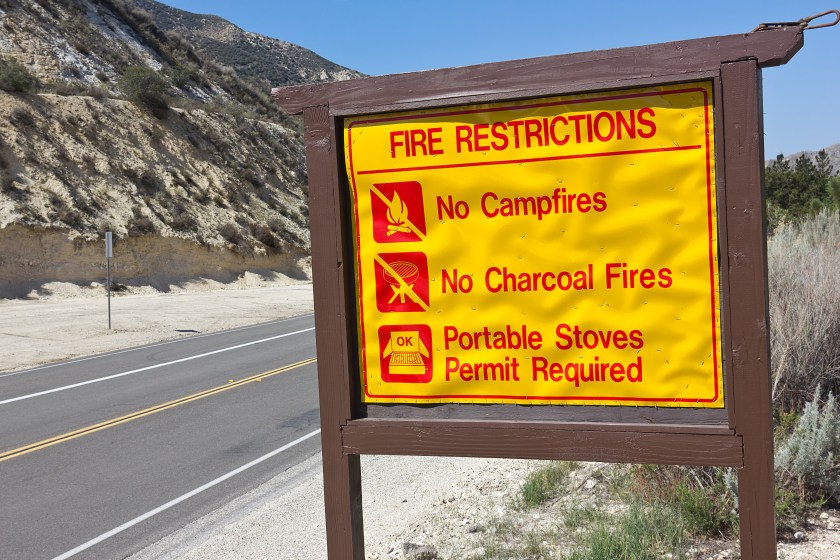
Getty Images, JohnnyH5
Does it suck not getting to have a campfire? Of course it does! But no matter how safe you're being with that fire, things can go wrong in a flash. A single gust of wind while you're busy looking for something in your pack can carry embers from your fire to an area you can't reach or see, and within moments you may be facing a fire that is out of control. You must respect the fire restrictions in the area you hunt, no matter what.
3. Remember: A Distant Fire is Still Dangerous
In 2020, the East Troublesome Fire in Colorado ran roughly 20 miles in the middle of the night over just a handful of hours. And because it wasn't expected to spread as quickly as it did, only limited full-evacuation orders were in place, which means a lot of people were taken by surprise and, ultimately, two died. That fire occurred in October—prime hunting time.
More and more, we're seeing wildfires make shockingly large runs in terrifyingly short amounts of time. Not only is a distant fire dangerous in and of itself, but it also can cause local wildlife to change its behavior. A hunting spot you've known your whole life as a great, quiet area full of mostly deer may suddenly be swarmed by panicky elk trying to escape from their normal range that is currently on fire.
That's why it's important to know active fires all around where you plan to hunt and to have a mode of communication (your own or with someone back home) to monitor progress.
4. Shoot Responsibly
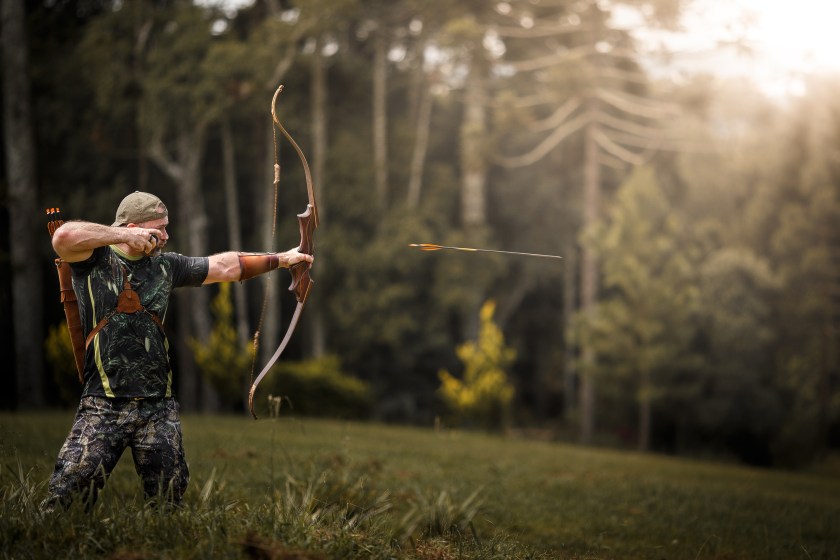
Getty Images, Capuski
Bullets are one of the main ways a hunter can accidentally start a wildfire, according to the Bureau of Land Management. In 2018, tracer rounds at a shooting range in Colorado sparked the Lake Christine Fire that burned over 12,500 acres over three months.
Even non-incendiary rounds can spark a fire if they hit a rock or a piece of metal and cause a spark. Something as seemingly mundane as a hot bullet fragment landing in a pile of dry fuel can turn into a flame, and fast.
Archers are equally at risk: A broadhead is just as capable of creating a spark off a rock as a bullet is, even if you didn't mean to hit it.
When you're lining up your shot, whatever your weapon of choice, pay attention not only to your target but also the surrounding area in case the shot goes wide. If you hit off-target, take the time to walk around a little and make sure nothing has been sparked. Maybe even sprinkle a bottle of water out over the area.
5. Monitor the Wind Patterns in the Field
Keeping an eye on the weather is crucial before and during your trip. Beforehand, you'll want to see how recently it has rained; if it's been excessively dry lately, the fire danger will be higher.
Also important: wind patterns. Strong winds increase fire risk. Incoming storms can cause winds to shift and increase unpredictably. Many fires have been pushed in new directions and extreme distances due to incoming storms. Even if the storm won't be there until after you leave, it may be preceded by dangerous winds as it sweeps into the area.
A NOAA weather radio is a critical tool to have with you in the field for getting accurate, up-to-date information on the weather in your area, and it will be your best option in areas out of cell coverage.
Knowing the wind direction can also help you plan for how to get out if a fire does start: You'll want to move away from the direction the fire is being blown.
6. Bring the Right Tools
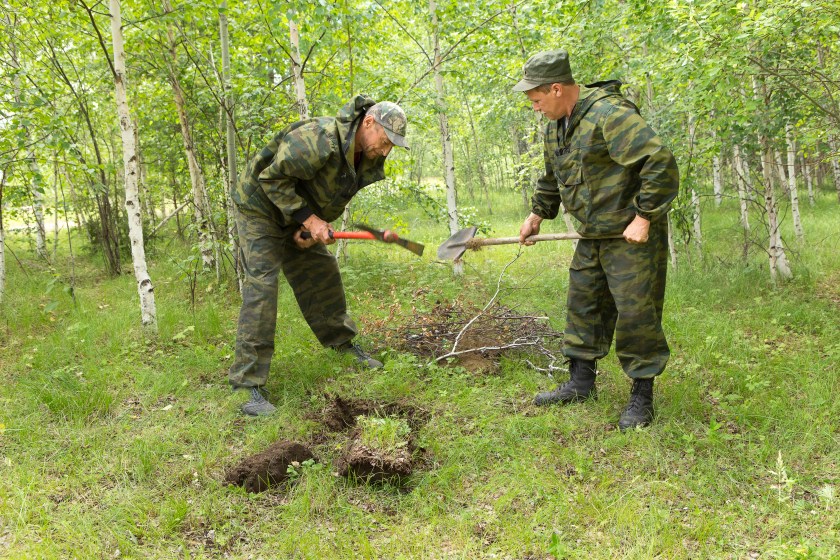
Getty Images, sdigital
If possible, always have the tools on hand to handle a small fire. This will, of course, depend heavily on how you hunt and where you hunt, but options include:
- A shovel for throwing dirt on a small flame.
- A fire extinguisher.
- A bucket, if you're near a stream, to move water from one area to another quickly and effectively.
- A paper map, in case you can't access your digital GPS devices or phone for escape routes.
7. Know Multiple Escape Routes
Whatever you do and wherever you are, it's smart outdoorsmanship to know multiple ways out. Your regular route could be unexpectedly cut off, and you don't want to be running blindly through the forest.
Don't just memorize the route back to your truck.
- Check your maps for other trails and potential refuges in case of a fire.
- Know where the creeks and ponds are.
- Know what areas are heavy timber and what areas are rocky.
- Know what terrain challenges might come up depending which way you go.
- Study the routes you find on the map, and even walk them once or twice if you can.
Additionally, if you're hunting in a group, make sure to have designated meeting spots and procedures in the event of a fire, including making sure that everyone else knows the potential escape routes as well.
8. Know When to Call for Help
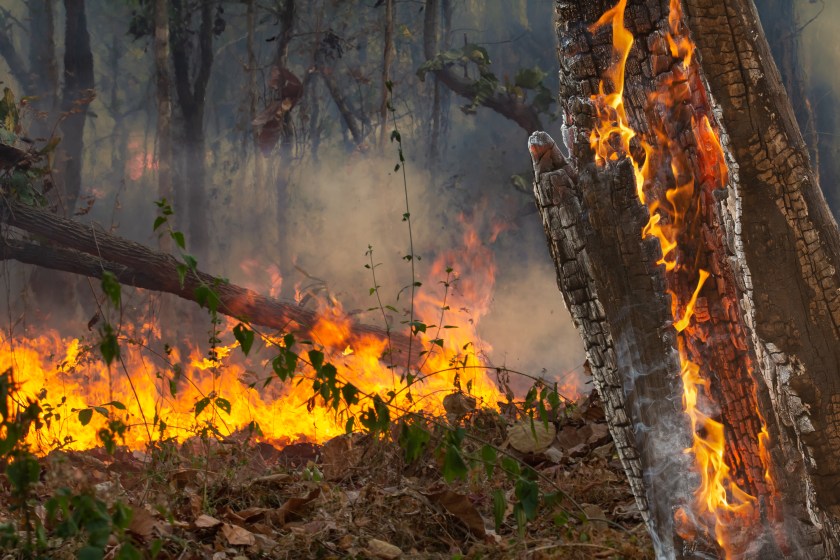
Getty Images, Toa55
While preparation is key, so is action: Don't fight a fire if it gets beyond the size of a large campfire. Step back. Get away, and call for help.
Be sure to know your location as precisely as possible whenever you are hunting so that, if needed, you can quickly and accurately pass that information on to a dispatcher.
READ MORE: How To Hunt the Rain With Optics
